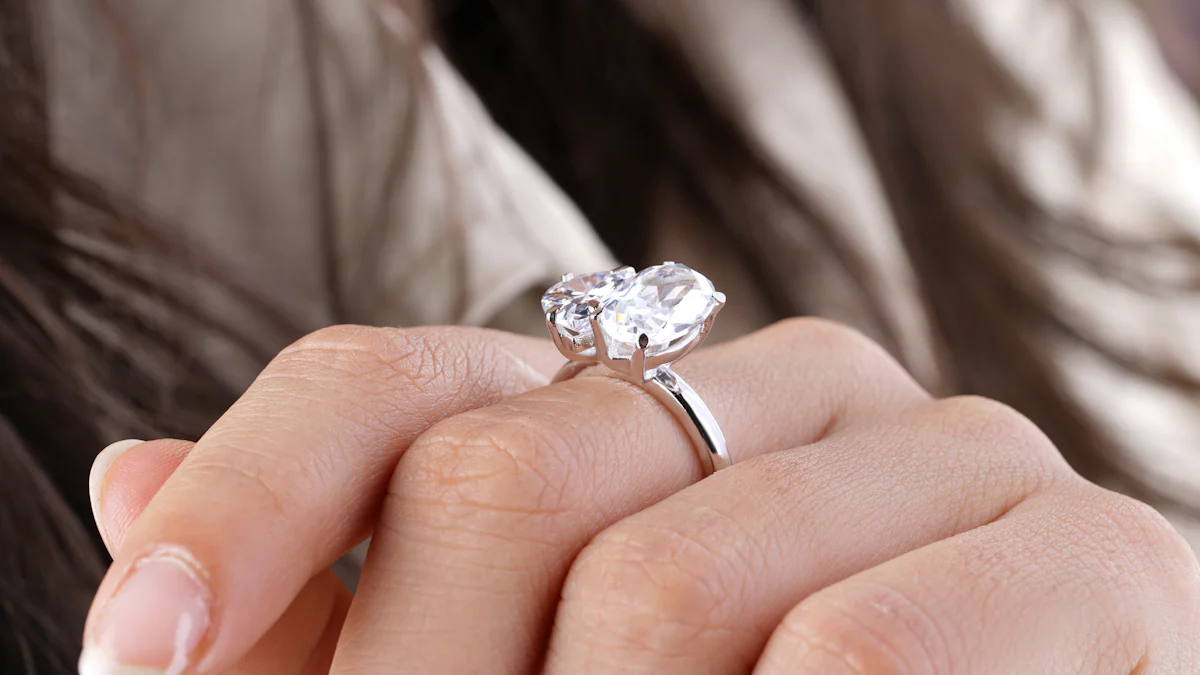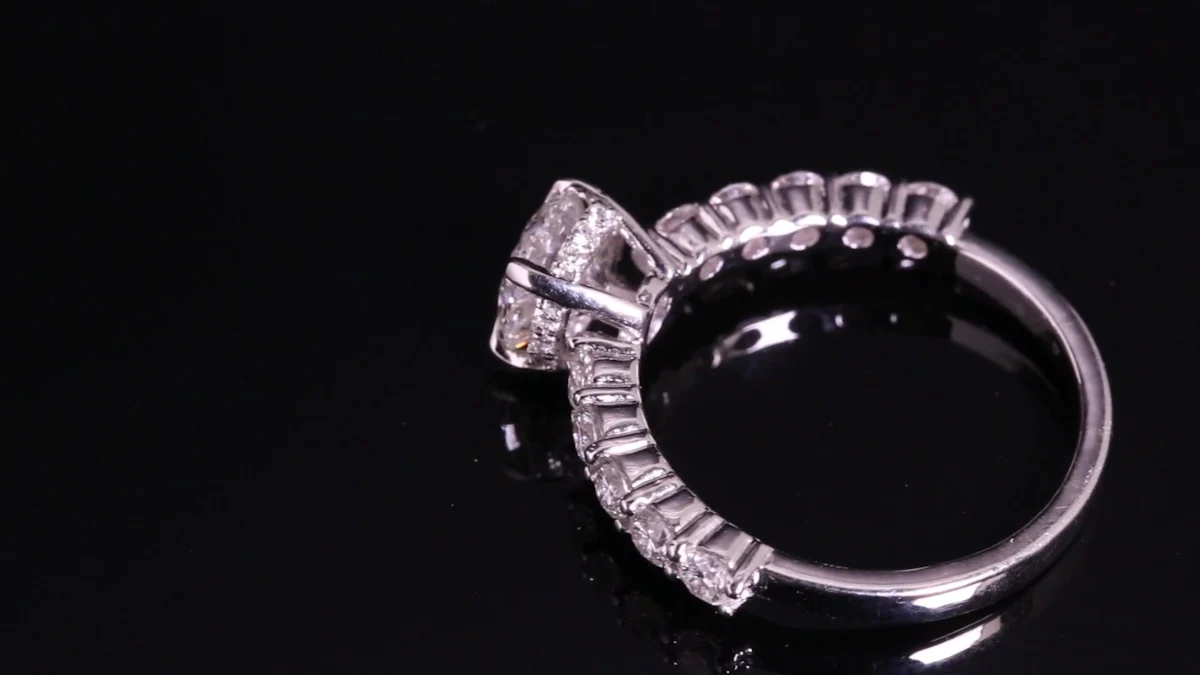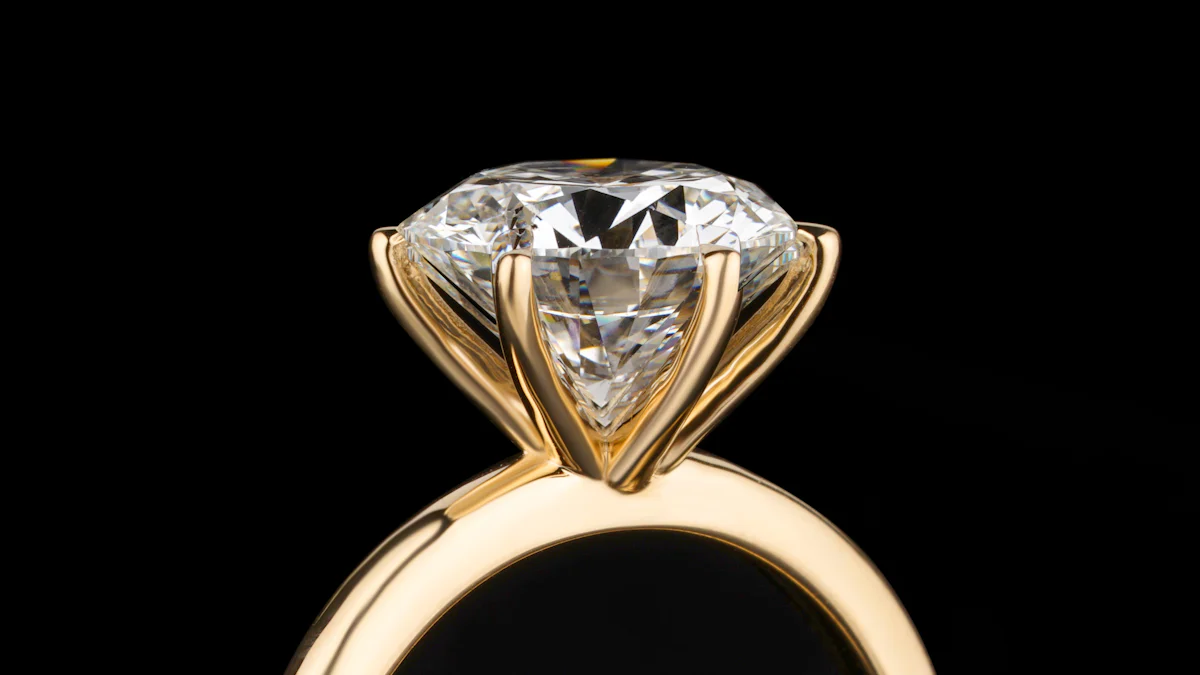VS Diamond vs SI Diamond Comparison Guide

When choosing a diamond, clarity plays a crucial role in its beauty and value. VS (Very Slightly Included) and SI (Slightly Included) diamonds are two popular clarity grades that determine the visibility of inclusions within the stone. VS diamonds have fewer inclusions, often invisible to the naked eye, while SI diamonds may show slight imperfections depending on their specific grade. These differences impact not only the diamond's appearance but also its price. Understanding clarity helps you make an informed decision that balances beauty, quality, and budget.
Key Takeaways
- Understand the clarity grades: VS diamonds have minimal inclusions invisible to the naked eye, while SI diamonds may have noticeable inclusions, impacting their appearance and value.
- Choose VS diamonds for exceptional clarity and brilliance, making them ideal for engagement rings and fine jewelry where appearance matters most.
- Opt for SI diamonds if you're budget-conscious but still want a beautiful stone; look for eye-clean SI1 diamonds for the best balance of quality and affordability.
- Consider the long-term value: VS diamonds retain their resale value better due to their higher clarity, making them a worthwhile investment.
- Evaluate your priorities: If clarity is paramount, go for VS diamonds; if size or budget is more important, SI diamonds can provide stunning options.
- Remember that inclusions can affect brilliance; strategically placed inclusions in SI diamonds can still allow for a beautiful sparkle.
- Always review the diamond's GIA grading report to ensure you're making an informed choice based on clarity, cut, color, and carat weight.
What Are VS Diamonds?

Characteristics of VS Diamonds
Definition of VS clarity grade
VS diamonds, short for "Very Slightly Included," rank third on the diamond clarity scale. This grade indicates that the diamond contains minor inclusions, which are tiny imperfections formed during its natural creation process. These inclusions are so small that they are only visible under 10x magnification by a trained gemologist. To the naked eye, VS diamonds appear flawless, making them a popular choice for those seeking high-quality stones without paying the premium for higher clarity grades like VVS or Flawless.
How inclusions appear in VS diamonds
Inclusions in VS diamonds are typically minimal and often located in less noticeable areas of the stone. A VS1 diamond may have inclusions that are nearly impossible to detect, even under magnification. On the other hand, VS2 diamonds might have slightly more visible inclusions under magnification, such as tiny crystals or feathers. However, these inclusions remain invisible to the naked eye, especially once the diamond is set in jewelry. This makes VS diamonds an excellent option for those who value clarity without compromising on beauty.
Subcategories of VS Diamonds: VS1 vs VS2
Differences between VS1 and VS2
VS diamonds are further divided into two subcategories: VS1 and VS2. VS1 diamonds have fewer and smaller inclusions compared to VS2 diamonds. In fact, many VS1 diamonds appear flawless even under 10x magnification unless closely examined by an expert. VS2 diamonds, while still high in clarity, may have inclusions that are slightly easier to spot under magnification. These differences make VS1 diamonds a safer choice for those prioritizing clarity, while VS2 diamonds offer a balance between quality and affordability.
Which is better for different needs?
Choosing between VS1 and VS2 depends on your priorities. If you want a diamond with exceptional clarity and are willing to invest a bit more, VS1 is the way to go. It’s perfect for those who want peace of mind knowing their diamond looks flawless under most conditions. However, if you’re looking for a high-quality diamond at a slightly lower price, VS2 offers great value. The inclusions in VS2 diamonds are still invisible to the naked eye, making them a smart choice for budget-conscious buyers who don’t want to compromise on appearance.
Practical Considerations for VS Diamonds
Suitability for engagement rings and fine jewelry
VS diamonds are ideal for engagement rings and fine jewelry. Their clarity ensures that the diamond sparkles brilliantly, free from visible imperfections. Whether you’re choosing a solitaire ring or a more intricate design, a VS diamond will maintain its beauty and elegance. The lack of visible inclusions means the diamond will look stunning in any setting, making it a versatile choice for various styles of jewelry.
Price range and value of VS diamonds
VS diamonds strike a balance between quality and cost. They are more affordable than higher clarity grades like VVS or Flawless but still offer exceptional visual appeal. The price of a VS diamond depends on factors like carat weight, cut, and color. While VS1 diamonds tend to be more expensive than VS2, both options provide excellent value for those seeking a high-quality diamond. If you’re comparing VS diamonds to SI diamonds, you’ll notice a price difference, but the added clarity and brilliance of VS diamonds often justify the investment.
What Are SI Diamonds?
Characteristics of SI Diamonds
Definition of SI clarity grade
SI diamonds, or "Slightly Included" diamonds, rank lower on the diamond clarity scale compared to VS diamonds. This grade indicates that the diamond contains inclusions that are more noticeable under magnification and, in some cases, visible to the naked eye. These inclusions can vary in size, type, and location, which directly impacts the diamond's appearance and value. Despite this, SI diamonds remain a popular choice for buyers who prioritize affordability without sacrificing too much on visual appeal.
How inclusions appear in SI diamonds
Inclusions in SI diamonds are more prominent than those in higher clarity grades. In smaller diamonds or intricate settings, these imperfections may remain less noticeable. However, in larger stones or certain cuts, inclusions can become more apparent. For example, an SI1 diamond might have inclusions that are only visible under magnification, while an SI2 diamond could feature inclusions that are visible to the naked eye. The placement of these inclusions plays a significant role in how they affect the diamond's overall look. Strategic settings can often hide these imperfections, allowing SI diamonds to maintain their sparkle and brilliance.
Subcategories of SI Diamonds: SI1 vs SI2
Differences between SI1 and SI2
SI diamonds are divided into two subcategories: SI1 and SI2. SI1 diamonds typically have fewer and smaller inclusions compared to SI2 diamonds. Most SI1 diamonds appear eye-clean, meaning their inclusions are not visible to the naked eye. On the other hand, SI2 diamonds often have more noticeable inclusions, especially in larger stones or cuts that highlight imperfections. These differences make SI1 diamonds a better choice for those seeking a balance between clarity and cost, while SI2 diamonds cater to buyers who prioritize size or budget over clarity.
Which is better for different needs?
Choosing between SI1 and SI2 depends on your preferences and priorities. If you want a diamond that looks clean to the naked eye and fits within a moderate budget, SI1 is an excellent option. It offers a good balance of quality and affordability. However, if your main focus is on getting a larger diamond or staying within a tighter budget, SI2 diamonds can provide great value. By carefully selecting an SI2 diamond with inclusions in less noticeable areas, you can enjoy a beautiful stone at a lower price.
Practical Considerations for SI Diamonds
Suitability for budget-conscious buyers
SI diamonds are perfect for buyers who want a stunning diamond without exceeding their budget. Their affordability makes them accessible to a wider audience, especially those looking for larger stones at a lower cost. If clarity is not your top priority, SI diamonds allow you to focus on other factors like carat size or cut. For smaller diamonds or intricate settings, SI diamonds can appear just as beautiful as higher clarity grades, making them a practical choice for budget-conscious shoppers.
Price range and value of SI diamonds
The price of SI diamonds varies based on factors like carat weight, cut, and color. A 1-carat SI diamond typically costs between $2,500 and $5,000, making it significantly more affordable than higher clarity grades like VS or VVS diamonds. SI1 diamonds tend to be priced higher than SI2 diamonds due to their better clarity. While SI diamonds may have a lower resale value compared to higher clarity grades, they offer excellent value for money when chosen wisely. By selecting an eye-clean SI diamond, you can enjoy a beautiful stone that fits your budget and meets your expectations.
VS Diamonds vs SI Diamonds: A Detailed Comparison

Clarity and Appearance
Visibility of inclusions to the naked eye
When it comes to clarity, the visibility of inclusions is a key factor. VS diamonds (Very Slightly Included) are known for their minimal inclusions, which are almost always invisible to the naked eye. Even under 10x magnification, spotting these imperfections requires a trained gemologist. This makes VS diamonds an excellent choice if you want a stone that looks flawless in everyday wear.
On the other hand, SI diamonds (Slightly Included) may have inclusions that are more noticeable. SI1 diamonds often appear clean to the naked eye, especially in smaller carat sizes or intricate settings. However, SI2 diamonds can have inclusions that are visible without magnification, particularly in larger stones or cuts that emphasize clarity. If you’re considering an SI diamond, carefully examine its inclusions to ensure they don’t detract from its beauty.
Impact on overall diamond brilliance
Clarity directly affects a diamond’s brilliance. Inclusions can interfere with how light passes through the stone, impacting its sparkle. VS diamonds, with their minimal imperfections, allow light to reflect and refract more effectively. This results in a brighter, more brilliant appearance.
SI diamonds, while still capable of sparkling beautifully, may have inclusions that slightly reduce their brilliance. The extent of this impact depends on the size, type, and location of the inclusions. For example, inclusions near the center of the diamond can affect its light performance more than those near the edges. Choosing an SI diamond with strategically placed inclusions can help maintain its brilliance while staying within your budget.
Price and Value
Average price differences between VS and SI diamonds
Price is one of the most significant differences between VS and SI diamonds. VS diamonds, with their higher clarity grade, come at a premium. A 1-carat VS diamond can cost several thousand dollars more than an SI diamond of the same size and quality. This price difference reflects the rarity and visual appeal of VS diamonds.
SI diamonds, however, offer a more budget-friendly option. A 1-carat SI diamond typically costs less, making it an attractive choice for buyers who prioritize size or cut over clarity. While SI diamonds are more affordable, they still provide excellent value when chosen wisely, especially if you select an eye-clean SI1 diamond.
Value for money in different scenarios
The value of a diamond depends on your priorities. If you’re looking for a stone with exceptional clarity and are willing to invest more, VS diamonds provide excellent value. They retain their brilliance and resale value better than SI diamonds, making them a long-term investment.
For budget-conscious buyers, SI diamonds offer a great balance between cost and appearance. An SI1 diamond that appears clean to the naked eye can deliver maximum value without breaking the bank. If you’re focused on getting a larger diamond or a higher-quality cut, opting for an SI diamond allows you to allocate more of your budget to these factors.
Suitability for Different Buyers
When to choose VS diamonds
You should choose VS diamonds if clarity is your top priority. These diamonds are perfect for engagement rings or fine jewelry where brilliance and flawlessness matter most. If you want peace of mind knowing your diamond will look stunning under any condition, VS diamonds are the way to go. They’re also ideal if you’re investing in a diamond with long-term resale value in mind.
When to choose SI diamonds
SI diamonds are a smart choice if you’re working within a budget but still want a beautiful stone. They’re especially suitable for buyers who prioritize size or cut over clarity. If you’re considering an SI diamond, focus on finding an eye-clean SI1 diamond. This ensures you get a visually appealing stone without paying for a higher clarity grade. SI diamonds are also great for smaller stones or intricate settings, where inclusions are less noticeable.
Choosing between VS and SI diamonds depends on your priorities. VS diamonds offer exceptional clarity with minimal inclusions, making them ideal for those seeking brilliance and long-term value. On the other hand, SI diamonds provide a budget-friendly option without sacrificing beauty, especially if you select an eye-clean SI1 diamond.
Both clarity grades can deliver stunning results when chosen wisely. If clarity and brilliance matter most, go for VS diamonds. If affordability and size are your focus, SI diamonds strike the perfect balance. Ultimately, the right choice aligns with your budget, style, and preferences.
FAQ
What is the main difference between VS and SI diamonds?
The primary difference lies in the visibility of inclusions. VS diamonds (Very Slightly Included) have minimal inclusions that are almost always invisible to the naked eye. In contrast, SI diamonds (Slightly Included) may have inclusions that are more noticeable, especially in larger stones or certain cuts. This distinction impacts both the appearance and price of the diamond.
Should you choose VS diamonds or SI diamonds?
Your choice depends on your priorities. If clarity and brilliance matter most, go for VS diamonds. They offer a flawless look to the naked eye and retain their value better over time. If you’re working within a budget but still want a beautiful diamond, SI diamonds provide excellent value. Focus on finding an eye-clean SI1 diamond for the best balance of quality and affordability.
How do inclusions impact the beauty of SI1 and SI2 diamonds?
Inclusions affect how light passes through the diamond, influencing its sparkle. SI1 diamonds often appear clean to the naked eye, so their inclusions don’t usually disrupt the diamond’s brilliance. However, SI2 diamonds may have more noticeable inclusions, which can slightly dull their sparkle. Choosing an SI diamond with well-placed inclusions can help maintain its beauty.
What is the price difference between VS and SI diamonds?
SI diamonds, however, offer a budget-friendly option without sacrificing too much on appearance, especially if you select an eye-clean SI diamonds diamond.
Are VS diamonds worth the extra cost?
If clarity and long-term value are your priorities, VS diamonds are worth the investment. Their minimal inclusions enhance brilliance and make them more desirable in the resale market. For those who view diamonds as both a symbol of beauty and a financial asset, VS diamonds provide peace of mind and lasting value.
Can SI diamonds still look beautiful?
Absolutely! Many SI diamonds, especially SI1, appear eye-clean and sparkle beautifully. Strategic settings can hide inclusions, making these diamonds a great choice for budget-conscious buyers. By carefully selecting an SI diamond with inclusions in less noticeable areas, you can enjoy a stunning stone at a lower cost.
How do VS1 and VS2 diamonds compare to SI1 and SI2 diamonds?
VS1 diamonds have the fewest inclusions, often invisible even under magnification. VS2 diamonds may have slightly more inclusions but still appear flawless to the naked eye. SI1 diamonds often look clean to the naked eye, while SI2 diamonds may have visible inclusions. The choice depends on your clarity preferences and budget.
What should you prioritize: clarity or size?
This depends on your personal preference. If you value a flawless appearance, prioritize clarity and opt for a VS diamond. If size matters more and you’re willing to compromise slightly on clarity, an SI diamond allows you to allocate more of your budget to carat weight or cut quality.
Do SI diamonds hold their value?
SI diamonds typically have a lower resale value compared to VS diamonds. Visible inclusions in SI diamonds reduce their desirability in the secondary market. If you plan to resell or upgrade your diamond in the future, a VS diamond may retain its value better.
How can you ensure you’re choosing the right diamond?
Always review the diamond’s GIA grading report. This report provides an accurate assessment of the diamond’s clarity, cut, color, and carat weight. For SI diamonds, examine the inclusions carefully to ensure they don’t detract from the stone’s beauty. For VS diamonds, focus on finding the best balance of clarity and price.
See Also
Price Comparison of All Around Diamond Rings
Evaluating Gold Band Diamond Rings from Leading Brands
A Guide to Diamond Cuts for Engagement Rings

